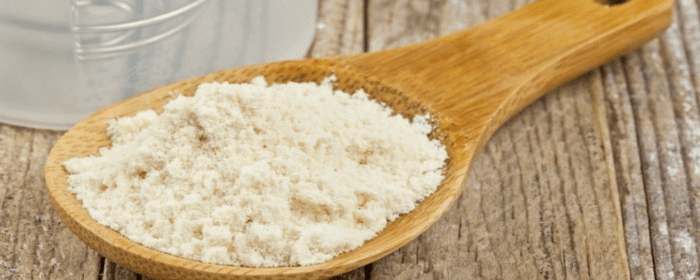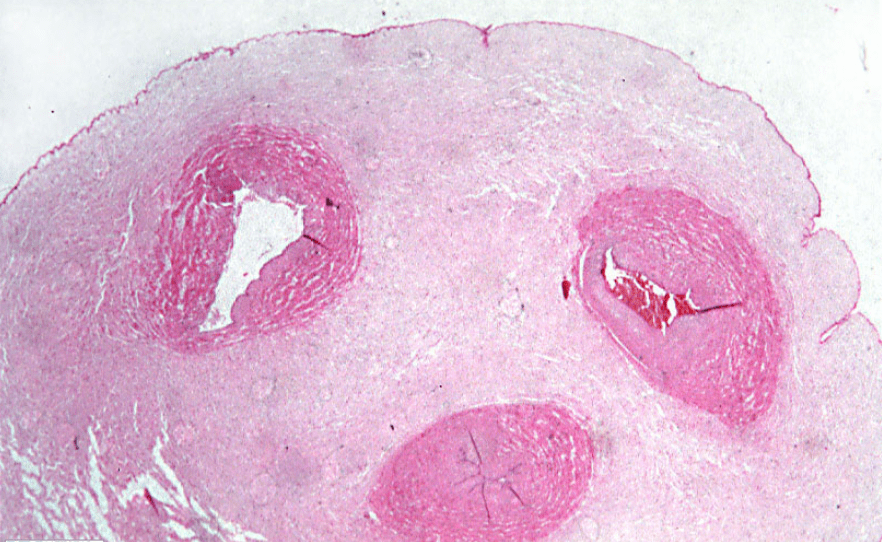
by admin | Jul 27, 2018 | Health Awareness, Lupus, Multiple Sclerosis, Parkinson's Disease, Studies
Colostrum is the milk produced by the mammary glands during pregnancy prior to giving birth. It is rich in antibodies that help prevent the newborn from various conditions. Colostrum as compared to normal milk contains a high amount of nutrients and fat, making it highly beneficial.
The most important thing to know about colostrum is that it is not a medication. It is a naturally designed food that maintains the health and prevents conditions. Colostrum is effective for shutting down the onset of conditions and infections, which helps the body to repair itself and allows the individual to enjoy a healthy and radiant life.
Colostrum is the Key to Gut Health
Colostrum is the source of everything that is required to maintain a healthy gastrointestinal tract. It is known that most of our conditions take birth in the gut and proper absorption of nutrients is the key to great health. It is one of the primary function of colostrum to maintain a healthy gut, which is the basis of the overall healthy body.
When the beneficial bacteria present in our intestine is outnumbered by the harmful bacteria then our gut is said to be out of balance. This imbalance has many consequences, one of which is the leaky gut syndrome.
Leaky gut syndrome is a condition due to which various pathogens and toxins pass through the lining of the gut and move freely in the body, this leads to various conditions. Leaky gut syndrome, if not treated can be a life-threatening condition.
Colostrum is an optimal treatment for treating leaky gut syndrome because it has growth factors that help repair the damage of the intestine to normal. It is also rich in immunoglobulins that control the pestering of fungi and bacteria in the body. In various conducted studies colostrum has successfully increased the surface area of the lining of the intestine, thereby improving the absorption of nutrients.
Colostrum: The Perfect & Functional Food
Looking at all the immune and growth factors that are present in colostrum, it is called the best alternative to pharmaceutical drugs, from steroids and antibiotics. Colostrum is also safe for people suffering from lactose intolerance and has no allergic reactions or side effects.
A functional food is one that has potential health benefits compared to normal food and is high in nutrients. Colostrum is high in nutrients and can be combined with other food products. It is most effective when taken on an empty stomach. Available in the form of capsules, colostrum is more effective and bioavailable.
Colostrum for Autoimmune Conditions:
Autoimmune conditions are those in which the body starts producing antibodies against itself. Colostrum has shown to be highly effective to treat autoimmune conditions like Lupus, Parkinson’s disease, and Multiple Sclerosis. Chemokine receptors have been observed to be the cause of the development of all these conditions. Colostrum produces antagonists of these receptors and has been shown to decrease the symptoms of many common autoimmune conditions.
Colostrum Used as a Topical Application:
Colostrum, if applied externally can help heal the burns, acne, cuts and various abrasions and even surgical cuts. If applied orally, it can help deal with sensitive teeth relieve canker sores and gingivitis.
Some Overall Benefits of Colostrum are:
Anti-inflammatory
Anti-aging
Anti-fungal
Anti-bacterial
Cancer
AuAutoimmuneondition
Blood pressure
Cholesterol
Sugar levels
Diabetes
Digestion
Flu prevention
Fat reduction
Heart health
Gut health
Immunity
Joint repair
Immunity
Mobility
Muscle repair
Pain
Stamina
Tissue repair
Wound healing
Weight loss
Inflammation
Below is a list of some common conditions for which colostrum can be effective:
Allergies
Anemia
Arthritis
Autoimmune conditions
Asthma
Bacterial infection
Bone marrow transplant
Cancer
Alcoholism
Allergies
Anemia
Arthritis
Crohn’s disease
Chronic fatigue
Diarrhea
Fibromyalgia
Food poisoning
Heart disease
Hepatitis
Influenza
Intestinal bowel syndrome
Joint repair
Leaky gut
Lupus
Multiple sclerosis
Osteoporosis
Obesity
Premature birth
Osteoporosis
Ulcer
Yeast infection
Viral infection
Where Can I Find Colostrum?
If you have any symptoms suggestive of gastro-intestinal dysbiosis (diarrhea, constipation, bloating, reflux, stomach discomfort or pain) then you should seek further work-up by your physician or a Functional Medicine Doctor.
In the meantime, it is recommended to start using Bovine Colostrum which can be found at Sovereign Laboratories at www.mysovlabs.com. Simply mix 2 tablespoons in 6oz of water and consume twice per day on an empty stomach. This product is full of gut healing immunoglobulins. Use for 2-3 months should result in significant improvement.
In addition, it is also recommended to take a good probiotic while using your bovine colostrum. Vitamin D levels should be optimized to levels between 80-100.

by admin | Jul 19, 2018 | Stem Cell Research, Stem Cell Therapy, Studies
Under normal circumstances, pain receptors react to painful stimuli such as burns or lacerations. Pain receptors from the body then send that information along nerves to the brain via electrical signals. Once that electrical information reaches the brain (which happens almost immediately), it is perceived as pain. This type of pain is a nociceptive pain.
Neuropathic pain, however, is different. Neuropathic pain is caused by a condition of the nerves themselves. Patients with neuropathic pain experience chronic pain without any specific injury. Neuropathic pain may be felt as a burning sensation, tingling, or a “pins and needles” sensation, or these combined. Neuropathic pain most often occurs in people with diabetes, certain vitamin deficiencies, and shingles. It may also occur after people receive certain cancer treatments following a stroke.
While it is rather simple to treat pain caused by a burn or laceration (nociceptive pain), it is very difficult to effectively treat neuropathic pain. Standard treatments for neuropathic pain include anti-epilepsy medications such as phenytoin, gabapentin, or carbamazepine and antidepressants such as venlafaxine, duloxetine, or amitriptyline. Usually, these treatments are only modestly effective. Eventually, many patients need powerful opioid medications like morphine and oxycodone to control their pain.
Researchers at the Cleveland Clinic published research that strongly suggests that stem cells may be able to improve those battling neuropathic pain. Dr. Jianguo Cheng and his research group have shown that mesenchymal stem cell transplantation into the spinal fluid can reduce pain and pain sensitivity in an animal model of neuropathic pain. In one series of experiments, they showed that mesenchymal stem cells could relieve pain in rats who had experimental nerve damage. Researchers confirmed the benefit of stem cells for neuropathic pain in several different sets of experiments. The results have been so encouraging that Dr. Cheng and the Cleveland Clinic have applied to patent the technology.
Dr. Cheng’s group also showed intravenously administered mesenchymal stem cells are just as effective as cells administered into the spinal fluid (intrathecally). This is good news for patients since it is less invasive to put stem cells into a vein than it is to infuse them into the cerebrospinal fluid. Amazingly, the research group showed that stem cells injected through either route (vein or spinal fluid) ended up finding their way to damaged nerves where they could provide maximum benefit.
While this work in animals must be performed in humans to confirm the results, this preclinical research establishes a strong foundation for those clinical studies. These results provide hope to those who struggle with daily neuropathic pain.

by admin | Jul 9, 2018 | Health Awareness, Parkinson's Disease, Stem Cell Research, Studies
Parkinson’s disease is known to be a slowly progressing neurological disorder that can cause issues with the motor movement of the body. Signs of Parkinson’s disease can include severe stiffness, loss of balance, and lethargy. Although there are no cures for the condition, symptoms can be slowed down. However, most of the prescribed drugs for Parkinson’s disease can decrease in effectiveness over the course of time. This led to some investigation from researchers to consider the role of exercise as a treatment option. Initial studies revealed that exercise does reduce the symptoms and slowed the progression of the condition.
According to a recent phase 2 study, intense treadmill exercise can potentially reduce the progression symptoms of Parkinson’s disease. In this study, researchers treated exercise as a treatment and tracked the safety and effectiveness of different levels of exercise. The study consisted of 128 people that had been diagnosed with Parkinson’s disease and were not taking any medications nor exercised. The aerobic capacity, heartbeats and the severity of the disease were tested for a baseline.
The patients were divided into three groups. Group 1 was asked to continue living their life in a normal manner. Group 2 was asked to implement exercise in which they would walk on the treadmill daily for 30 minutes, four times a week. The speed of the treadmill was manipulated to maintain the heart rate of the participants between 60 to 65 percent of their maximum heart rate. Group 3 was asked to also implement exercise for the same amount of time but their heart rate was maintained in the range of 80 to 85 percent of their maximum rates. The patients were under supervision for the initial month and then asked to continue exercising on their own.
At the end of the six-month study, Group 1 showed their symptoms progressed further. Group 2 showed their symptoms progressed but not as much as Group 1. Group 3 showed almost no progression in their symptoms after following a heavier exercise regimen as the other groups. This study concluded that higher intensity exercise helped in decreasing the symptoms by improving the neuronal blood supply. Improved blood flow helps with the overall health of the brain and slows down the deterioration of the body.
The findings from the study are quite encouraging for patients who are recently diagnosed or early in their symptoms to have great benefits from the heavy exercise program. However, it is advised to consult with your physician prior to starting an exercise plan to avoid injuries and ensure your safety.

by admin | Nov 28, 2017 | Studies, Stem Cell Research
A recent publication in BioMed Research International has reviewed the study on the potential benefits of Wharton’s jelly derived mesenchymal stem cells in treating a variety of diseases. According to the authors of the review, these stem cells can be collected during millions of births each year at the time of delivery. A huge advantage of this type of stem cell collection over other methods is that it is not associated with the adverse side effects associated with other collection methods, nor is it particularly invasive. Its collection is also highly efficient.
Other advantages of Wharton’s jelly derived mesenchymal stem cells are that collecting them does not raise ethical concerns and that the cells themselves proliferate rapidly. Some stem cells have a tendency to lead to tumors or are prone to cause immune reactions. Wharton’s jelly derived stem cells on the other hand appear to circumvent both of these problems, making them valuable for a variety of applications in medicine.
Mesenchymal stem cells, which are the basis for a number of stem cell therapies and the relevant research, may be limited in value when they have been collected from older patients. Some reasons for this limitation are disease, DNA damage, and oxidative stress.
The authors also provide information on the regulatory and logistics aspects to stem cells. They explain that quality management systems are already part of the stem cell therapy infrastructure, which ensures that Wharton’s jelly derived mesenchymal stem cells would be donated, processed, stored, and distributed with the same high standards that other stem cells undergo donation, processing, storage, and distribution. The same is also true, they say, for the procurement and testing of these stem cells. While there seem to be clear benefits of Wharton’s jelly derived stem cells, more research on the clinical applications of these cells will help researchers determine the overall value of these cells.
Learn more about the benefits of stem cell therapy here.

by admin | Nov 25, 2017 | Studies, ALS
A recent publication in Stem Cells Translational Medicine described an open-label phase I clinical trial that was designed to assess the safety of a stem cell therapy for amyotrophic lateral sclerosis (ALS). The specific procedure involved two repeated injections of autologous bone marrow derived mesenchymal stem cells into the spinal canal of patients with ALS. The researchers found that the injections were safe during their implementation and that they did not have any unsafe effects during a follow-up period of one year.
The phase I clinical trial included 8 patients whose ALS was either definite or probable. The patients underwent a procedure to have mesenchymal stem cells isolated from their bone marrow, and the stem cells were expanded outside the patients’ bodies for 28 days. Unfortunately, a patient died before treatment, so only 7 of the patients then had the spinal canal injections of the stem cells. The two injections were given 26 days apart.
Conventional tests to evaluate the status of ALS in patients were used to assess the impact of the stem cells on the patients’ disease. In the 6 months following the injections, the disease progression did not accelerate, according to the ALS Functional Rating Scale-Revised (ALSFRS-R) score. There were also no serious adverse events observed over a 12 month follow up. Some adverse side effects occurred but subsided with or without treatment within a few days.
The significance of this study is the observation that this particular stem cell therapy procedure appears safe for ALS patients. Further research will help likely determine how stem cell therapy for amyotorophic lateral sclerosis can be used to slow the disease progression, while maintaining high degrees of safety.
Learn more about stem cell therapy for ALS here.

by admin | Nov 22, 2017 | Studies, Supranuclear Palsy
A recent publication in the Journal of Translational Medicine has highlighted the potential for stem cells to help patients with progressive supranuclear palsy and has proposed measures for testing the safety of stem cell therapy. Like Parkinson’s disease, progressive supranuclear palsy is a neurodegenerative disease that is progressive and characterized by abnormal deposits of the protein tau in the brain. Also like Parkinson’s, there is not a reliable prevention or cure for the disease.
Previous studies have shown that stem cells can help improve Parkinson’s disease symptoms, including problematic functioning of the brain chemical dopamine. Though the etiology of progressive supranuclear palsy is unknown, because it has some physiological features that are similar to Parkinson’s, researchers have reasoned that stem cell therapies may also help the patients who suffer from this disease. However, given that Parkinson’s disease and progressive supranuclear palsy can be differentiated on a clinical basis, it was initially unclear what specific impact stem cells may have on progressive supranuclear palsy.
Nonetheless, consistent with the idea that stem cells may help those with progressive supranuclear palsy, some studies have provided promising data for the ability of stem cells to improve relevant symptoms. The aim of the recent Journal of Translational Medicine publication was to lay out a plan for testing the safety of stem cell therapy in progressive supranuclear palsy patients.
The researchers propose a randomized, double-blind phase I clinical trial that would also be placebo-controlled to assess the safety of stem cell therapy using mesenchymal stem cells in patients with progressive supranuclear palsy patients. In addition to providing evidence on the safety of the stem cell therapy, another value in executing the proposal from this publication is the ability to distinguish whether the effects of stem cells in progressive supranuclear palsy that have been previously observed are due to placebo. In other words, this placebo-controlled trial would allow researchers to determine whether patients improve because they believe they are going to improve or because the stem cell therapy has a direct impact on their disease.
Learn more about stem cell therapy for Parkinson’s disease.







 St. Petersburg, Florida
St. Petersburg, Florida
